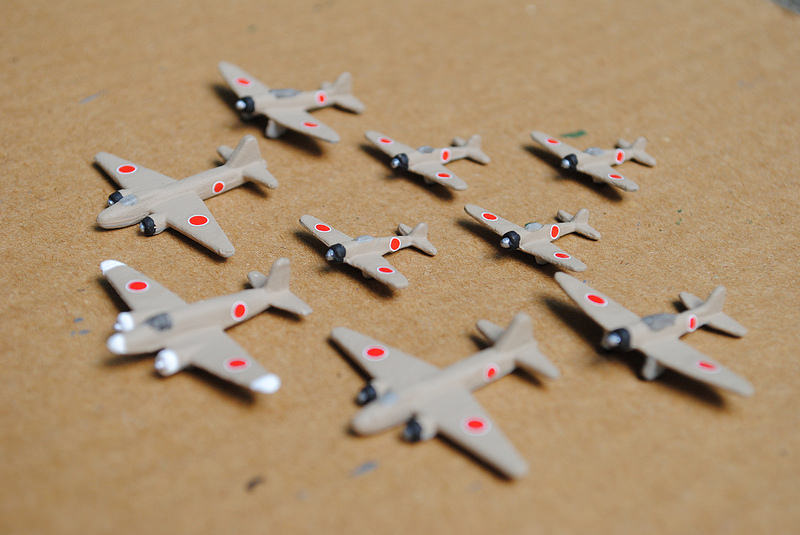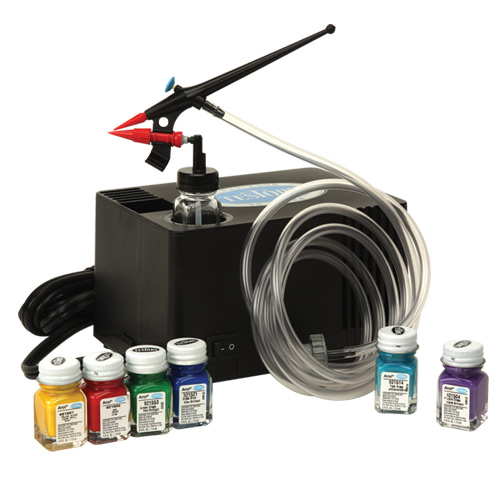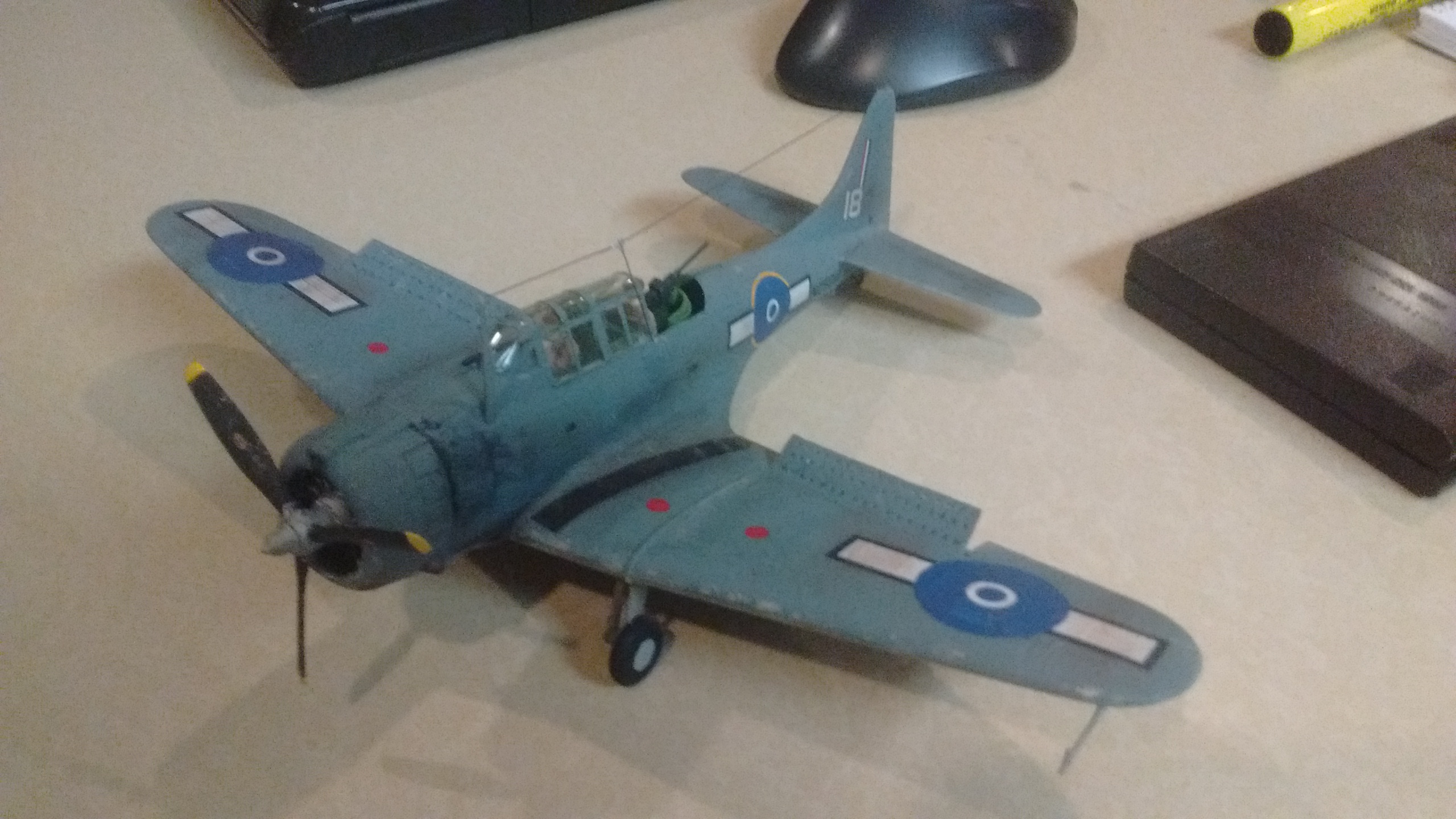@Andy6049:
Did you airbrush any of the after-primer coats? I have an airbrush that I have only used once. It is not metal. It was a airbrush starting kit that came with a compressor. The compressor has no psi adjustment option and the “Brush” is plastic. It came with the following instruction for use: plug hose into compressor. :? It didn’t come with any material for the proper thinning of enamels. I experimented with different ratios and finally just used one, but I can’t remember what it was now.
After the primer, the only thing I actually airbrushed was the base color layer for whatever pieces I was doing (olive drab, USN Haze Blue/Gray, etc…). You might be able to airbrush more after that if you have finer nozzles to play with, but I did not. All the other camouflage, marking and weathering I used a normal brush for.
@Andy6049:
Attached is a computer picture of the airbrush I have. The second picture is of my first attempt at airbrushing and weathering. Speaking of which, is it worth it to weather A&A pieces? It seems like it might be a lot of work for such small pieces. But if it noticeably makes a difference then I may do it.
The weathering on your Dauntless looks great. Doing that on your A&A pieces is really personal preference also, though I definitely like to. I feel it adds a pleasant aesthetic to them, which complements any layering, shading (washing) or highlighting (drybrushing). It is definitely noticeable. I attached a couple pictures from other painters here on A&A.org. One is very flat and precise, the other is very dynamic and worn. Two different extremes of the spectrum.
Looks like you may want to upgrade your airbrush though. I have an Iwata Neo, which I got locally. This is a decent brush, but by no means top notch. However it is reliable and gets the job done well without spending a huge amount. https://www.airbrushaction.com/iwata-neo-cn-airbrush-reviews-specs-and-videos.html
The compressor you get can be just as important as your airbrush. So keep that in mind.
@Andy6049:
Recommended ratios for the thinning of enamels for airbrush use?
It depends on the results you want to achieve and probably the brand of paint you are using (and also the brand/type of airbrush). I had to do some tests and adjustments when I started airbrushing mine. Honestly, I was not as scientific about it either, like you mention below. I didn’t record exact measurements or ratios. I believe I used a small medicine dropper to approximate quantities or just mixed until it looked and felt right. That is a practice I would like to change once I get going again though.
Here is a pretty good reference I found: http://www.craigcentral.com/models/thinning.asp
There is a lot of good information on that website if you want to read it, including about airbrushes themselves.
@Andy6049:
Model Masters and the plain jane Testors is what I use too.
I think they are a good brand. The basic Testors are okay, but they tend to be glossier (IMO) and do not have much variety.
My local hobby shop carries the MM International Military and Figure line (http://www.testors.com/product-catalog/testors-brands/model-master/international-military-and-figure) which is great. They have a huge variety of specific colors, often by theater and year. Of course, the majority of the colors pertain to WWII, which is exactly what we’d want. I find that extremely convenient. I can buy the exact Afrika Korps yellow or Russian Guards Red each and every time, without having to measure and record exact ratios of different paints to mix together. Makes life way simpler. Occasionally, I will tint or shade here and there, but not much.
@Andy6049:
For the primer, is it just a color or is the composition different? i.e. could I use grey spray paint as primer or do I need to use something that specifically says “primer?”
What IWNGU said above sounds like good advice.
@Andy6049:
Thank you all for you help and advice. When I use to paint, I was never very scientific about it, just grabbed the color I wanted and went. :-D
I am going through the threads on painted pieces to compare various aspects. Actually, I am downloading a lot of threads and pics for use in my hobby area where there is no internet.
That sounds exactly like what I did. I have a vast library of pictures and colorplates here on my computer broken down by country, vehicle type and camo scheme. I also save a lot of other people’s work and use it to get new or interesting ideas. The community is great for that in particular. There are a lot of creative people on A&A.org.

.jpg)



.jpg)







